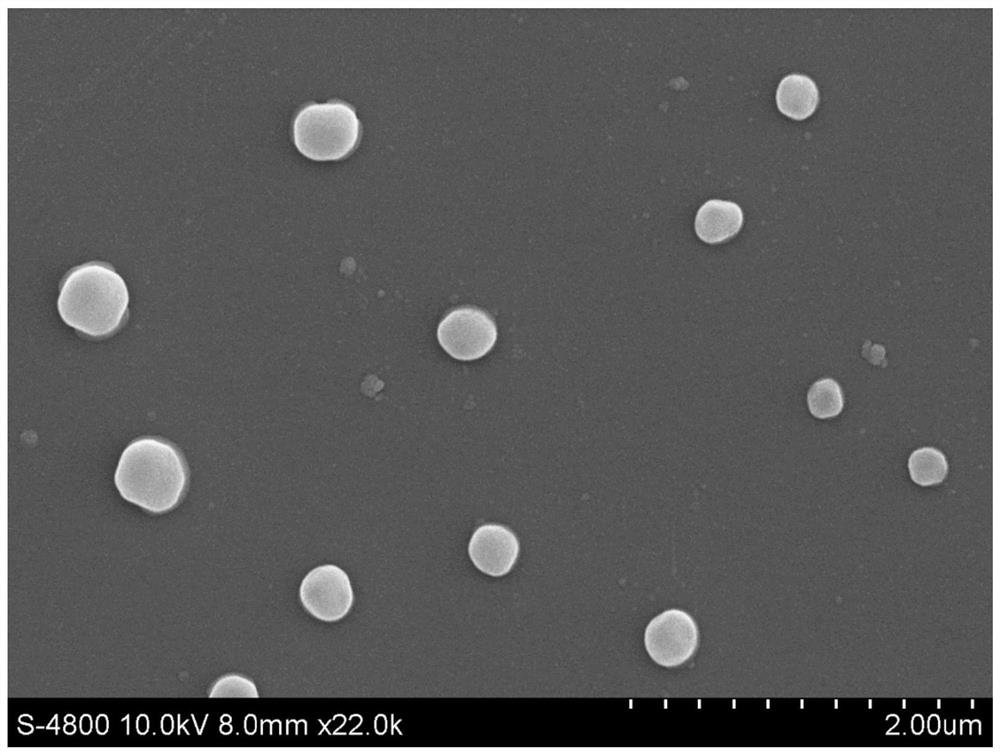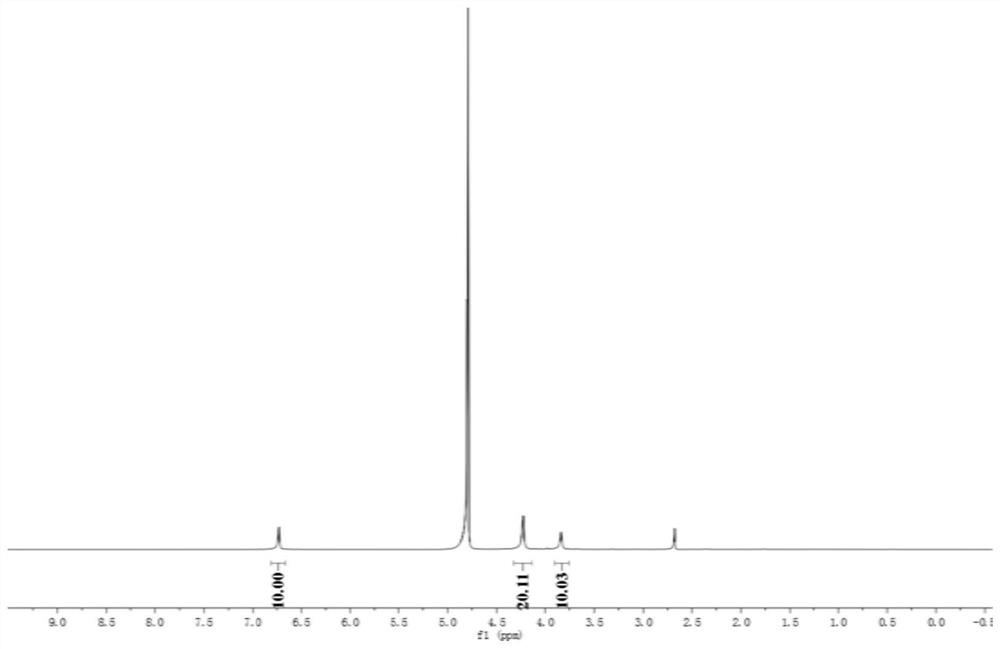PH-GSH dual-responsiveness nano curcumin prodrug loading system
A curcumin-based, responsive technology, applied in the field of nano-biomedical materials, can solve the problems of low drug release rate, complex system structure, and low drug loading rate, and achieve good application and development prospects, high drug loading, and improved The effect of water solubility
- Summary
- Abstract
- Description
- Claims
- Application Information
AI Technical Summary
Problems solved by technology
Method used
Image
Examples
Embodiment 1
[0045] Embodiment 1: the synthesis of compound 2
[0046] The synthetic route of compound 2 is as follows:
[0047]
[0048] Accurately weigh 1,4-dimethoxybenzene (0.691g, 5mmol) and paraformaldehyde (0.450g, 15mmol) into a 100mL round bottom flask, add 60mL of 1,2-dichloroethane to dissolve. Then boron trifluoride diethyl ether (0.75ml, 6mmol) was added to the above solution, stirred at room temperature for 2h under nitrogen protection, and ice water was added to quench the reaction after the reaction was completed. Atmospheric filtration, followed by removal of solvent using a rotary evaporator. The residue was dissolved in dichloromethane (DCM), washed three times with deionized water, saturated NaHCO3 solution, and saturated NaCl solution, and the organic phase was collected and dried with anhydrous MgSO4 for 2 h, filtered, and evaporated under reduced pressure to remove the organic solvent. The crude product can be obtained and separated by column chromatography (pet...
Embodiment 2
[0049] Embodiment 2: the synthesis of compound 3
[0050] The synthetic route of compound 3 is as follows:
[0051]
[0052] Accurately weigh compound 2 (0.660 g, 0.88 mmol) into a 50 mL round bottom flask, add 20 mL of dry DCM to dissolve, add boron tribromide (4 mL, 43 mmol) dropwise, and stir at room temperature for 24 h under nitrogen protection. After the reaction was completed, ice water was added to quench the reaction. After adding ice water and stirring for 30 min, the white solid was obtained by suction filtration and washed with 1 mmol / L hydrochloric acid and chloroform to obtain compound 3. (This compound is unstable, after the selection is obtained, go to the next step directly).
Embodiment 3
[0053] Embodiment 3: the synthesis of compound 4
[0054] The synthetic route of compound 4 is as follows:
[0055]
[0056] Compound 3 (0.610 g, 1 mmol) was dispersed in 30 mL of acetonitrile, and K was added to the suspension 2 CO3 (1.658g, 12mmol), stirred at room temperature for 30min. Then ethyl bromoacetate (2 mL, 18 mmol) and KI (0.166 g, 1 mmol) were added, and refluxed for 24 h under nitrogen protection. Treat that reaction finishes, after solution cools down naturally, filter to remove unnecessary K 2 CO3, and the solvent was removed using a rotary evaporator. The residue was redissolved in DCM, washed three times with deionized water and saturated NaCl solution, and the organic phase was collected and washed with anhydrous NaCl 2 SO4 dried for 2h. Filter under normal pressure and distill off the organic solvent under reduced pressure to obtain the crude product, which can be separated by column chromatography (dichloromethane / methanol, v / v=50:1) to obtain or...
PUM
 Login to View More
Login to View More Abstract
Description
Claims
Application Information
 Login to View More
Login to View More - R&D
- Intellectual Property
- Life Sciences
- Materials
- Tech Scout
- Unparalleled Data Quality
- Higher Quality Content
- 60% Fewer Hallucinations
Browse by: Latest US Patents, China's latest patents, Technical Efficacy Thesaurus, Application Domain, Technology Topic, Popular Technical Reports.
© 2025 PatSnap. All rights reserved.Legal|Privacy policy|Modern Slavery Act Transparency Statement|Sitemap|About US| Contact US: help@patsnap.com



